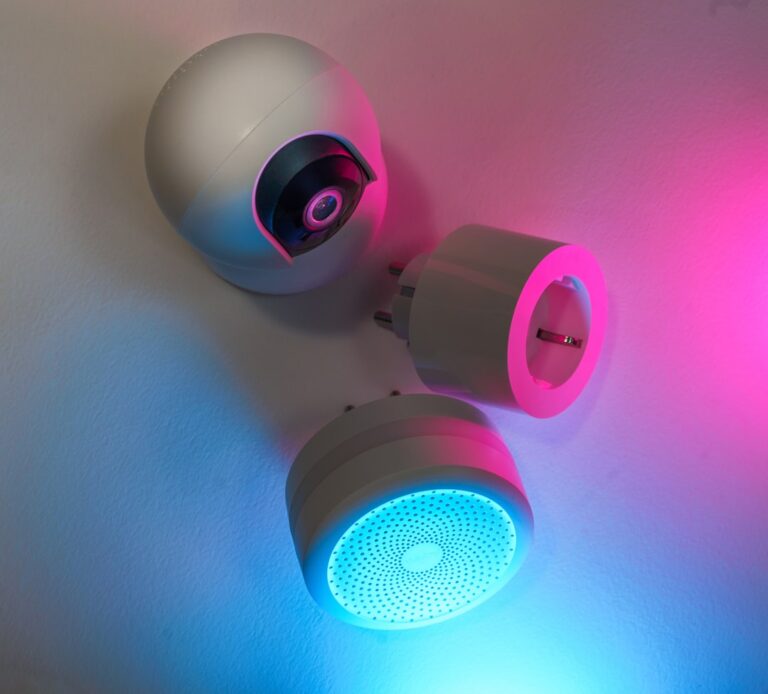Power surges are sudden increases in voltage that can occur in electrical systems, often resulting from various factors such as lightning strikes, power outages, or even the operation of heavy machinery. These surges can lead to significant damage to electrical devices and appliances, causing them to malfunction or fail entirely. Understanding the nature of power surges is crucial for homeowners and businesses alike, as it allows them to take proactive measures to protect their valuable equipment.
The voltage in a typical electrical system is designed to remain stable; however, when a surge occurs, it can spike significantly above the normal operating level. This spike can last for just a fraction of a second but can be powerful enough to disrupt the functioning of sensitive electronics. For instance, a surge can cause circuit boards to overheat, leading to irreversible damage.
Recognizing the potential sources of power surges and their effects is the first step in safeguarding one’s electrical devices.
Key Takeaways
- Power surges can occur due to lightning, utility grid switching, or electrical equipment malfunctions, and can cause damage to appliances and electronics.
- Surge protection is important to safeguard appliances and electronics from damage caused by power surges.
- There are different types of surge protectors including power strips, wall-mount surge protectors, and whole-house surge protectors.
- When choosing a surge protector, consider the joule rating, clamping voltage, and response time to ensure it meets the needs of your appliances.
- Proper installation and usage of surge protectors is essential for effective protection against power surges.
The Importance of Surge Protection
The Risks of Power Surges
The importance of surge protection cannot be overstated, as it serves as a barrier between sensitive electronics and the unpredictable nature of electrical fluctuations.
The Benefits of Surge Protection
Investing in surge protection not only helps prevent costly repairs or replacements but also provides peace of mind. Homeowners and business operators can rest assured that their valuable equipment is shielded from unexpected voltage spikes. Moreover, surge protectors can enhance the overall safety of an electrical system by reducing the risk of fires caused by electrical malfunctions.
A Wise and Necessary Decision
In an age where technology plays a pivotal role in daily life, ensuring that devices are protected from power surges is a wise and necessary decision.
Types of Power Surge Protectors
There are several types of power surge protectors available on the market, each designed to cater to different needs and applications. The most common types include point-of-use surge protectors, whole-house surge protectors, and power strips with built-in surge protection. Point-of-use surge protectors are typically used for individual devices and are often found in homes and offices.
They plug directly into wall outlets and provide a layer of protection for devices like computers and televisions. Whole-house surge protectors, on the other hand, are installed at the main electrical panel and offer comprehensive protection for all devices connected to the electrical system. This type of surge protector is particularly beneficial for homes in areas prone to severe weather conditions, where lightning strikes are more likely to occur.
Additionally, power strips with built-in surge protection combine multiple outlets with surge protection features, making them a convenient option for users with several devices that need safeguarding.
How to Choose the Right Surge Protector for Your Appliances
| Appliance | Power Rating (Watts) | Recommended Surge Protector Rating (Joules) |
|---|---|---|
| Refrigerator | 600 | 1000 |
| Television | 200 | 600 |
| Computer | 500 | 1000 |
| Microwave | 1000 | 2000 |
Selecting the appropriate surge protector for specific appliances requires careful consideration of several factors. First and foremost, it is essential to assess the voltage rating and energy absorption capacity of the surge protector. A higher joule rating indicates a greater capacity to absorb energy from surges, making it more effective in protecting devices.
For instance, devices with sensitive electronics may require surge protectors with higher joule ratings to ensure adequate protection. Another critical factor to consider is the number of outlets needed. Users should evaluate how many devices they intend to connect and choose a surge protector that accommodates their needs without overcrowding.
Additionally, features such as indicator lights that signal protection status and automatic shut-off capabilities can enhance usability and safety. By taking these factors into account, individuals can make informed decisions when selecting surge protectors that best suit their appliances.
Installing and Using Surge Protectors
Proper installation and usage of surge protectors are vital for maximizing their effectiveness. When installing point-of-use surge protectors, users should ensure that they are plugged directly into wall outlets rather than into other power strips or extension cords. This practice helps maintain optimal performance and reduces the risk of overloading circuits.
For whole-house surge protectors, professional installation is often recommended to ensure that they are correctly integrated into the electrical system. Once installed, users should familiarize themselves with the operational features of their surge protectors. Regularly checking indicator lights can help determine whether the device is functioning correctly or if it has been compromised by a power surge.
Additionally, it is advisable to replace surge protectors after they have absorbed a significant surge or after several years of use, as their protective capabilities may diminish over time.
Common Myths and Misconceptions about Surge Protectors
Despite their importance, there are several myths and misconceptions surrounding surge protectors that can lead to misunderstandings about their functionality. One common myth is that all power strips provide surge protection; however, this is not always the case. Many basic power strips do not include any protective features against voltage spikes, which can leave connected devices vulnerable.
Another misconception is that surge protectors are only necessary during thunderstorms or severe weather events. In reality, power surges can occur at any time due to various factors such as equipment malfunctions or utility company issues. Therefore, relying solely on weather conditions to determine when to use surge protectors can be misleading.
Understanding these myths is crucial for making informed decisions about protecting valuable electronics.
Signs Your Appliances May Have Been Damaged by a Power Surge
Identifying signs of damage caused by power surges can help individuals take timely action to mitigate further issues. One common indication is unusual behavior from electronic devices, such as flickering screens or erratic performance. Appliances may also exhibit signs of overheating or produce strange noises when powered on, which could signal internal damage due to voltage spikes.
In some cases, devices may fail to turn on altogether after experiencing a power surge. If multiple appliances connected to the same circuit show signs of malfunctioning simultaneously, it may indicate that a power surge has occurred. Recognizing these signs early on can prompt users to seek repairs or replacements before further damage occurs.
The Cost of Not Using Surge Protectors
Neglecting to use surge protectors can lead to significant financial repercussions over time. The cost of replacing damaged appliances can quickly add up, especially for high-end electronics such as computers or home entertainment systems. In addition to replacement costs, individuals may also face expenses related to data loss or downtime if critical devices fail unexpectedly.
Moreover, the potential for fire hazards associated with unprotected electrical systems cannot be overlooked. Electrical fires caused by surges can result in extensive property damage and pose serious safety risks to occupants. By investing in surge protection upfront, individuals can avoid these costly consequences and ensure the safety and longevity of their appliances.
Tips for Maximizing the Lifespan of Your Appliances with Surge Protectors
To maximize the lifespan of appliances with surge protectors in place, users should adopt several best practices. Regular maintenance checks on both appliances and surge protectors are essential for ensuring optimal performance. This includes inspecting cords for wear and tear and ensuring that connections are secure.
Additionally, users should avoid overloading circuits by connecting too many devices to a single surge protector or outlet. Distributing devices across multiple outlets can help prevent overheating and reduce the risk of tripping circuit breakers. Furthermore, keeping appliances away from moisture and extreme temperatures can also contribute to their longevity.
What to Do in the Event of a Power Surge
In the event of a power surge, individuals should take immediate steps to assess potential damage and ensure safety. First, it is advisable to unplug sensitive electronics during a storm or when experiencing fluctuations in power supply. This precaution helps prevent damage from unexpected surges.
After a power surge occurs, users should inspect their appliances for any signs of malfunctioning or damage. If any issues are detected, it may be necessary to consult with a professional technician for repairs or replacements. Additionally, documenting any damage for insurance purposes can be beneficial in case claims need to be filed.
Protecting Your Investments with Surge Protectors
In conclusion, understanding power surges and their potential impact on electrical devices is crucial for anyone looking to safeguard their investments. The importance of using surge protectors cannot be overstated; they serve as an essential line of defense against unpredictable voltage spikes that can lead to costly repairs or replacements. By choosing the right type of surge protector and following best practices for installation and usage, individuals can significantly enhance the longevity and functionality of their appliances.
Ultimately, investing in surge protection is not just about preventing damage; it is about ensuring peace of mind in an increasingly technology-driven world. By dispelling common myths and recognizing signs of potential damage, users can take proactive steps toward protecting their valuable electronics from the unpredictable nature of electrical systems.
FAQs
What is a power surge protector for appliances?
A power surge protector for appliances is a device designed to protect electronic devices and appliances from power surges and voltage spikes. It works by diverting excess voltage away from the connected devices, preventing damage to them.
How does a power surge protector work?
A power surge protector works by using metal oxide varistors (MOVs) to divert excess voltage away from the connected devices. When a power surge occurs, the MOVs absorb the excess voltage and redirect it to the ground wire, protecting the connected appliances.
Why is it important to use a power surge protector for appliances?
Power surges and voltage spikes can occur due to lightning strikes, utility grid switching, or electrical faults. These surges can damage electronic devices and appliances, leading to costly repairs or replacements. Using a power surge protector helps to safeguard appliances from such damage.
What types of appliances can benefit from a power surge protector?
Any electronic device or appliance that is plugged into an electrical outlet can benefit from a power surge protector. This includes televisions, computers, refrigerators, washing machines, and other household appliances.
How do I choose the right power surge protector for my appliances?
When choosing a power surge protector for appliances, consider the joule rating, number of outlets, and the clamping voltage. Higher joule ratings provide better protection, while more outlets allow you to connect multiple devices. The clamping voltage should be low to ensure effective protection.






